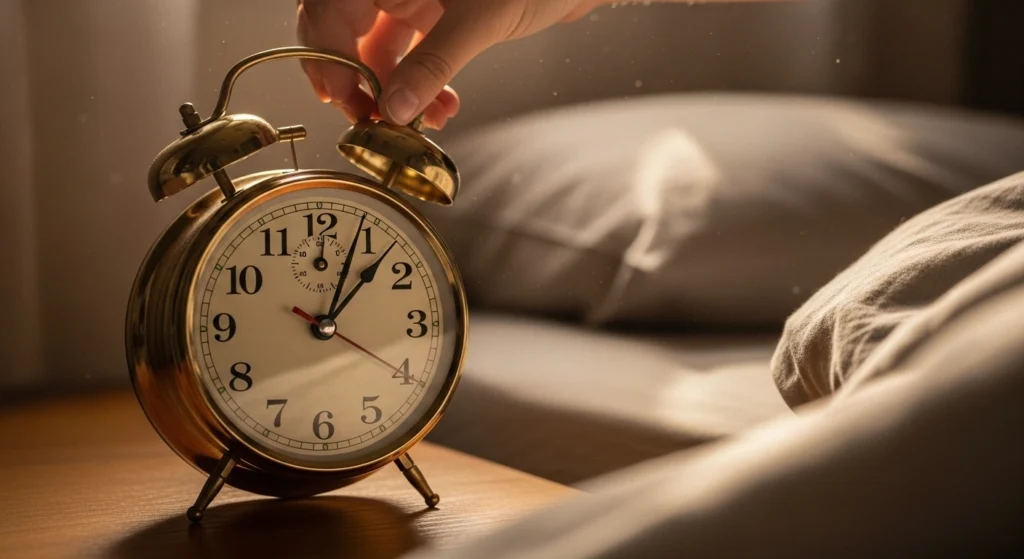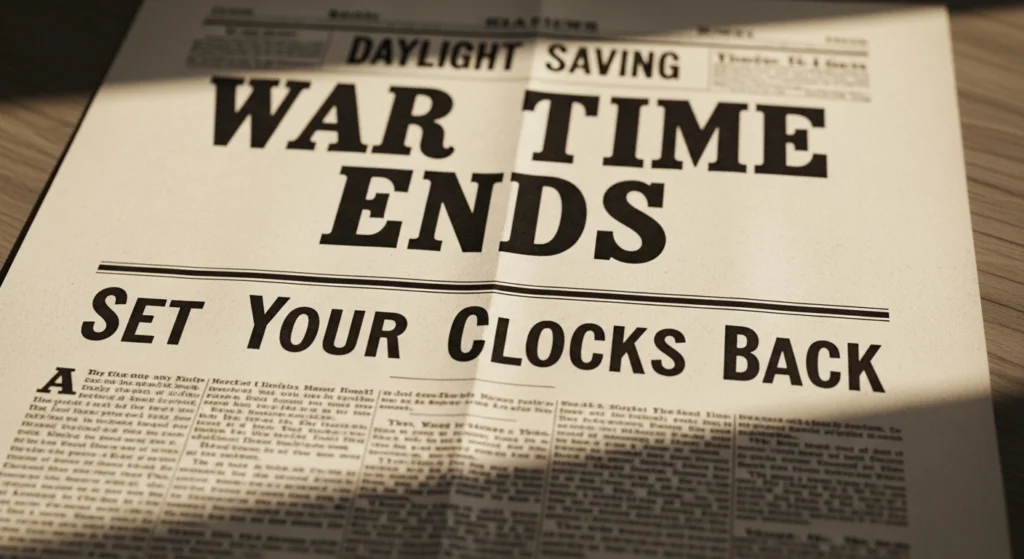Time Change 2025 : When Clocks Fall Back and What to Know
For millions of Americans, an extra hour of sleep is just over a week away. The annual time change 2025 that signals the end of Daylight Saving Time is approaching, prompting residents to prepare for earlier sunsets and a shift in their daily routines.
This November, clocks will “fall back” as the nation returns to Standard Time, a transition that affects everything from sleep patterns to evening commutes. While the change brings a welcome gift of additional sleep, it also ushers in the shorter, darker days of late autumn and winter.
When to Set Your Clocks Back

The time change 2025 occurs on Sunday, November 2, at 2:00 a.m. local time . At that moment, clocks will turn backward one hour to 1:00 a.m., granting most people an extra hour of sleep.
Many people find it easier to adjust their clocks before going to bed on Saturday, November 1. While smartphones and internet-connected devices often update automatically, remember to manually adjust appliances like microwaves, ovens, and car clocks .
This shift marks the end of Daylight Saving Time, which began on March 9 this year. The United States will remain on Standard Time for approximately four months until clocks spring forward again on March 8, 2026 .
Maximizing the Extra Hour and Easing the Transition

That additional sixty minutes of sleep comes as a relief to many, but the time change can disrupt natural body rhythms. The sudden shift in daylight patterns affects our circadian rhythms, potentially causing fatigue, mood changes, and difficulty adjusting to new wake-up times.
Parenting expert Ericka Souter recommends gradual adjustments, especially for families with children. “To help your child’s body adjust, don’t just move bedtime,” Souter advised. “Start moving everything – meals, naps, and wake times – earlier by about 10 to 15 minutes each day leading up to the time change” .
She notes that “even with the best plan, most kids need a few days or sometimes a full week to adjust. Don’t panic if you see crankiness, clinginess, or appetite changes. It’s normal, and it will pass” .
For all ages, sleep experts suggest:
- Increasing exposure to natural morning light after the change
- Avoiding lengthy naps, especially in the late afternoon
- Limiting caffeine and alcohol consumption around bedtime
- Maintaining consistent sleep schedules, even on weekends
The Health Impact of the Time Change
While the “fall back” transition is generally considered less disruptive than losing an hour in spring, medical professionals note it still affects our health. The American Academy of Sleep Medicine has formed a coalition advocating for the elimination of seasonal time changes, citing potential health risks .
Research has associated the time shift with increased incidents of heart attacks, strokes, abnormal heart rhythms, sleep disruption, mood disturbances, and even suicide, according to studies published in the Journal of Clinical Sleep Medicine .
ABC News medical correspondent Dr. Darien Sutton recommends increasing sunlight exposure during the day, particularly in the morning, and limiting intake of alcohol and caffeine to help your body adjust .
Why Do We Change Our Clocks Anyway?

The practice of Daylight Saving Time has a complex history in the United States. It was first established by Congress through the Standard Time Act of 1918, primarily as a wartime conservation measure . The current system, established by the Uniform Time Act of 1966, has been updated several times, most recently in 2005 .
The original intention was to maximize daylight hours during waking hours, theoretically reducing energy consumption by decreasing the need for artificial lighting. However, subsequent studies have questioned the actual energy savings, with some research even suggesting increased energy use in certain regions .
Not all states participate in this time change 2025 tradition. Arizona (except for the Navajo Nation) and Hawaii remain on Standard Time year-round, as do the territories of American Samoa, Guam, the Northern Mariana Islands, Puerto Rico, and the U.S. Virgin Islands .
Is This the Last Time Change?

Recent years have seen growing momentum to eliminate the twice-yearly clock changes. A recent Gallup poll shows that most Americans (about 70%) are in favor of either staying on standard time or daylight saving time all year long rather than switching between the two .
Approximately 48% of those polled would prefer to remain on standard time year-round, while another 24% want to stay on Daylight Saving Time permanently. Only 19% said the status quo is fine .
In January 2025, the Sunshine Protection Act, which would make daylight saving time permanent across the U.S., was re-introduced in both the U.S. House of Representatives and the Senate . However, the legislation has not yet been brought to a vote, and similar efforts have stalled in previous years.
About 30 states have introduced or passed legislation to end the twice-yearly clock change, with some proposing to do so only if neighboring states agree . Without federal approval, states cannot observe Daylight Saving Time permanently but can choose to remain on Standard Time year-round.
Embracing the Evening Darkness

The most immediate effect of the time change 2025 will be noticeable in the evenings. As Daylight Saving Time ends, the sun will set approximately an hour earlier, leading to darker late-afternoon commutes and curtailing outdoor activities after work or school .
In central New Jersey, for example, the sunset on Saturday, November 1, will occur at about 5:55 p.m. The following day—after the time change—the sun will dip below the horizon at 4:54 p.m.
This shift provides more morning light, which some people find makes waking up easier. However, the loss of evening daylight often feels more dramatic, contributing to what some people experience as seasonal affective disorder during the winter months.
Preparing for the Time Change 2025
As November 2 approaches, consider these steps to make a smooth transition:
- Adjust sleep schedules gradually in the days leading up to the change
- Use the opportunity to test and replace batteries in smoke and carbon monoxide detectors
- Take advantage of the brighter mornings with brief walks or time outdoors
- Create a relaxing evening routine to adjust to the earlier darkness
- Be patient with family members, especially children, as they adapt
While the time change 2025 on November 2 marks the beginning of darker evenings, it also offers a chance to embrace cozy indoor activities and appreciate the changing seasons. Whether this annual ritual continues in future years remains uncertain, but for now, Americans can at least look forward to that bonus hour of sleep.
FAQs…
Do we gain or lose an hour of sleep this November?
You gain an hour of sleep. When clocks “fall back” from 2:00 a.m. to 1:00 a.m., the night is effectively extended, making it one of the more popular weekends of the year for tired adults.
Which states do not observe the time change?
Arizona (except for the Navajo Nation) and Hawaii do not observe Daylight Saving Time and remain on Standard Time year-round. The U.S. territories of American Samoa, Guam, the Northern Mariana Islands, Puerto Rico, and the U.S. Virgin Islands also do not change their clocks.
Why is the time change potentially bad for your health?
While gaining an hour is easier than losing one, the sudden shift can still disrupt your body’s circadian rhythm. The American Academy of Sleep Medicine links time changes to increased short-term risks of sleep disturbances, mood swings, and even cardiovascular events, which is why they advocate for a permanent, year-round time.








